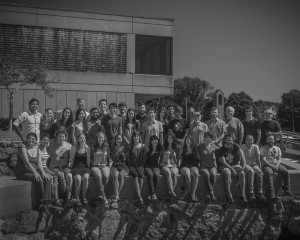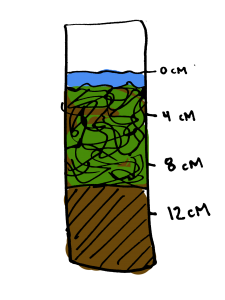I spent this past summer at the MBL Microbial Diversity course which Jonathan recently posted about. I had heard about the course from a variety of different people and it had been described to me as “life changing” so many times that I knew I had to attend. Between the wonderful staff and the plethora of machines and supplies available the sky was the limit in terms of what one could do during the course. I had heard from previous students and TA’s that often people found themselves in lab until midnight or 1 AM, but I didn’t believe them until I actually found myself in that very position! It wasn’t all work though, nestled on the beautiful coast of cape cod there was time to explore luminescent beaches and Martha’s Vineyard among other locations. Now when someone asks me about the course I find myself also answering with “life changing” the course didn’t disappoint.

As a geneticist/bioinformatian, there were a lot of things I didn’t know going into the course. I learned a lot about thermodynamics and different microbial processes. I also learned how to use a bunch of machines and do a ton of different techniques that I had never done before. Best of all though, I learned how to approach a project and how to analyze and think about the specific goal of a project and how to achieve that goal. Proper media design, for example, and incorporation of thermodynamics are very important when trying to culture specific microorganisms. Also, the library is always your best friend when attempting a new project (also google scholar, possibly twitter).
 During the first half of the course, you learn how to use the different machines/techniques available and then during the second half, you do an independent mini project. Although the 2015 projects write-ups aren’t up yet, past mini project write-ups can be found online here. For my project, I attempted to find and visualize microbial eukaryotes and their symbionts. I took a leaf litter/soil core from the bottom of Trunk River, analyzed it with microsensors and then deconstructed it into 4 cM sections. I analyzed samples from each section on the HPLC and IC, used samples from each section to culture different kinds of eukaryotes (fungi, protists/cilliates & amoeba) and then fixed samples for tubulin/monoFISH combined staining. Although, I didn’t have a lot of success finding/imaging symbionts, I did have a lot of fun and I ended up culturing ~20 different amoeba of which one looks looks novel from the 18S sequence!
During the first half of the course, you learn how to use the different machines/techniques available and then during the second half, you do an independent mini project. Although the 2015 projects write-ups aren’t up yet, past mini project write-ups can be found online here. For my project, I attempted to find and visualize microbial eukaryotes and their symbionts. I took a leaf litter/soil core from the bottom of Trunk River, analyzed it with microsensors and then deconstructed it into 4 cM sections. I analyzed samples from each section on the HPLC and IC, used samples from each section to culture different kinds of eukaryotes (fungi, protists/cilliates & amoeba) and then fixed samples for tubulin/monoFISH combined staining. Although, I didn’t have a lot of success finding/imaging symbionts, I did have a lot of fun and I ended up culturing ~20 different amoeba of which one looks looks novel from the 18S sequence!
Many people who have taken this course have later been inspired by it in their own research (ex. Rachel Dutton & cheese as model microbial system). I definitely think that this course succeeds at inspiring its students. Inspiration and creativity often lead to discovery after all. Although my research has yet to be inspired by the course, it did inspire me to write the cheesy sonnet below.
With a spark and a flicker, our minds ignite
Metamorphosis from gas to flame
A swamp of secrets in the black of night
Microbial processes set in motion long before we came
Chemical measurements unlock our deepest cores
FISHing for knowledge just out of sight
Microbial galaxies wait through a maze of open doors
Bacteria, Archaea or microbial Eukaryotes, all paths are right
Horizons expand as coarse focus shifts to fine
Dreaming of a gel with a bright band
When failure occurs, we improve media design
From uncultured to cultured, we now understand
Exploring microbial diversity can lead to discovery
From this course there is no recovery